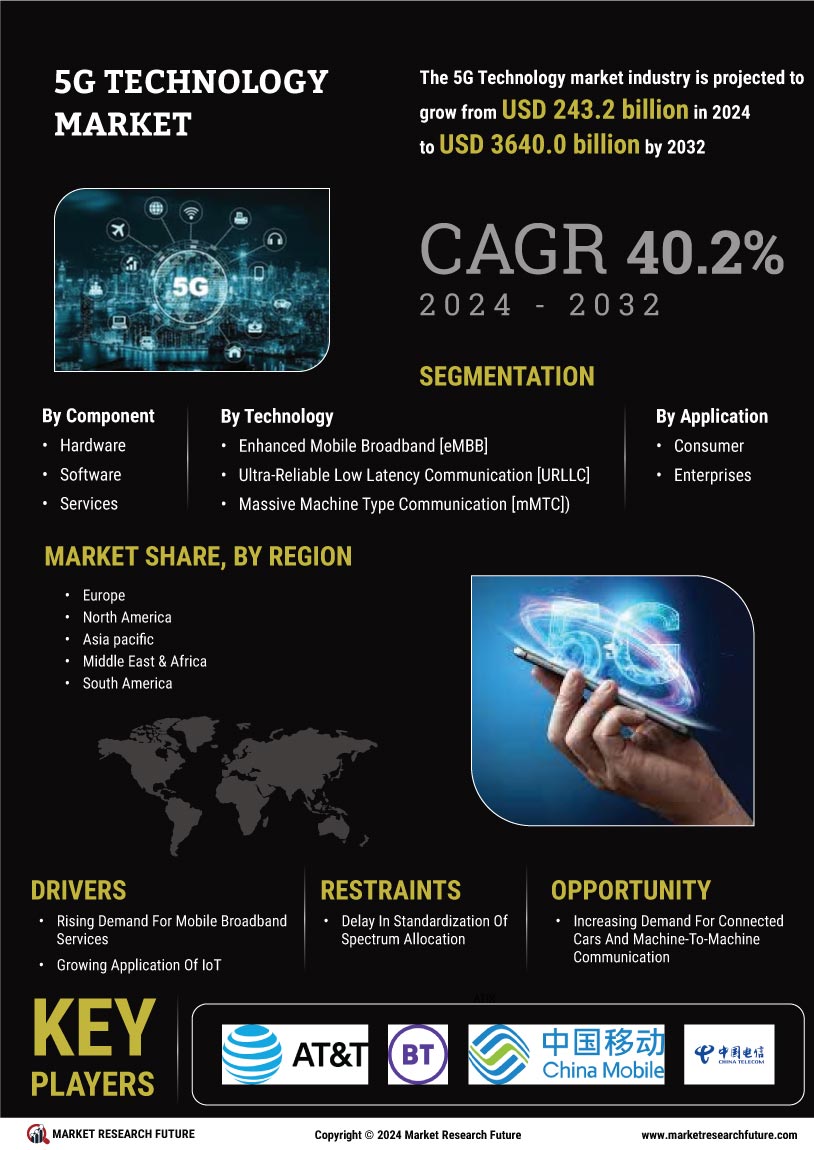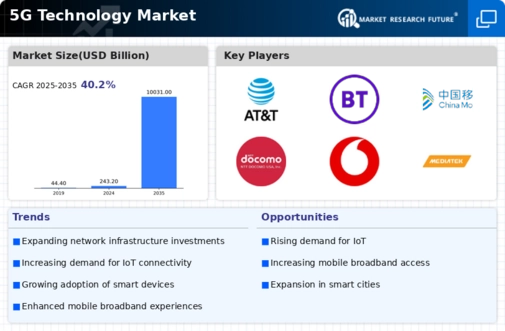Market Growth Projections
The Global 5G Technology Market Industry is projected to experience remarkable growth, with estimates indicating a market value of 10031.0 USD Billion by 2035. This growth trajectory is underpinned by a compound annual growth rate (CAGR) of 40.23% from 2025 to 2035. Such projections highlight the increasing reliance on 5G technology across various sectors, including telecommunications, healthcare, and transportation. As more industries adopt 5G solutions, the market is expected to expand significantly, driven by innovations and advancements in technology. The anticipated growth reflects the transformative potential of 5G in reshaping how businesses and consumers interact with technology.
Government Initiatives and Support
The Global 5G Technology Market Industry is bolstered by government initiatives and support aimed at accelerating the deployment of 5G networks. Many governments are recognizing the strategic importance of 5G for economic growth and competitiveness. They are implementing policies that promote investment in telecommunications infrastructure and provide funding for research and development. For example, various countries have established regulatory frameworks to facilitate spectrum allocation for 5G services. This supportive environment is likely to encourage private sector participation, leading to faster network rollouts and increased market penetration, ultimately contributing to the overall growth of the industry.
Increased Adoption of Smart Cities
The Global 5G Technology Market Industry is significantly influenced by the increased adoption of smart city initiatives worldwide. Cities are leveraging 5G technology to enhance urban living through improved public services, traffic management, and energy efficiency. For example, smart traffic systems powered by 5G can optimize traffic flow and reduce congestion, leading to lower emissions. As urban populations continue to grow, the demand for smart city solutions is expected to rise, further driving the need for 5G infrastructure. This trend not only supports sustainability goals but also positions cities to attract investments, thereby contributing to the overall market growth.
Rising Demand for High-Speed Connectivity
The Global 5G Technology Market Industry is experiencing a surge in demand for high-speed connectivity, driven by the proliferation of smart devices and the Internet of Things. As of 2024, the market is valued at approximately 243.2 USD Billion, reflecting a growing reliance on fast and reliable internet services. This demand is not only evident in urban areas but also in rural regions, where enhanced connectivity can bridge the digital divide. The increasing number of connected devices, projected to reach billions by 2035, further underscores the necessity for robust 5G infrastructure to support seamless communication and data transfer.
Emergence of New Applications and Services
The Global 5G Technology Market Industry is witnessing the emergence of new applications and services that capitalize on the capabilities of 5G technology. Industries such as healthcare, automotive, and entertainment are exploring innovative solutions that require high-speed, low-latency connections. For instance, telemedicine applications are becoming more prevalent, allowing for remote consultations and real-time monitoring of patients. Additionally, the automotive sector is advancing towards autonomous vehicles, which rely on 5G for vehicle-to-everything communication. As these applications gain traction, they are expected to drive substantial growth in the market, with projections indicating a market value of 10031.0 USD Billion by 2035.
Advancements in Telecommunications Infrastructure
The Global 5G Technology Market Industry benefits from significant advancements in telecommunications infrastructure, which facilitate the deployment of 5G networks. Governments and private entities are investing heavily in upgrading existing infrastructure to accommodate the new technology. This transition is expected to enhance network capacity and reduce latency, thereby improving user experience. For instance, initiatives to install small cells and fiber optic networks are underway globally, enabling faster rollout of 5G services. As these advancements continue, the market is likely to expand rapidly, with a projected CAGR of 40.23% from 2025 to 2035, indicating a robust growth trajectory.

















Leave a Comment